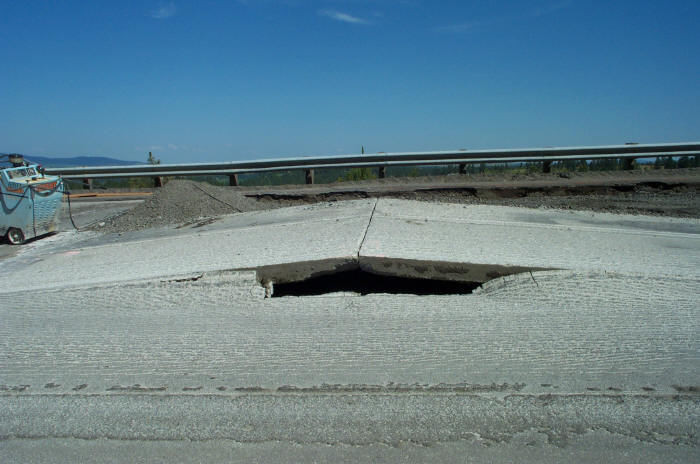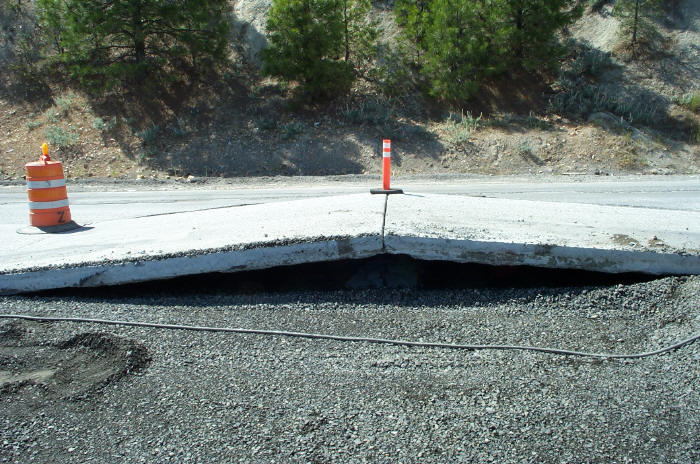Description
A localized upward slab movement and shattering at a joint or crack. Usually occurs in spring or summer and is the result of insufficient room for slab expansion during hot weather.
Problem
Roughness, moisture infiltration, safety hazard
Possible Causes
During cold periods (e.g., winter) PCC slabs contract leaving wider joint openings. If these openings become filled with incompressible material (such as rocks or soil), subsequent PCC slab expansion during hot periods (e.g., spring, summer) may cause high compressive stresses. This can be especially true when abnormally hot temperatures are encountered in a particular area. For instance, in the summer of 2021, the Seattle, Washington area experienced a record-breaking four-day (26-29 June) heat wave where each day was above 100F (Saturday through Monday) and culminating with an all-time high of 108F. Once this heat wave started, there were many accounts of concrete pavement blowups (or “buckling”). Ultimately, if high compressive stresses caused by adjacent slab expansion is great enough, the slabs may buckle and shatter at their joint to relieve the stresses. Blowup can be accelerated by:
- Joint spalling (reduces slab contact area and provides incompressible material to fill the joint/crack)
- D cracking (weakens the slab near the joint/crack area)
- Freeze-thaw damage (weakens the slab near the joint/crack area)


